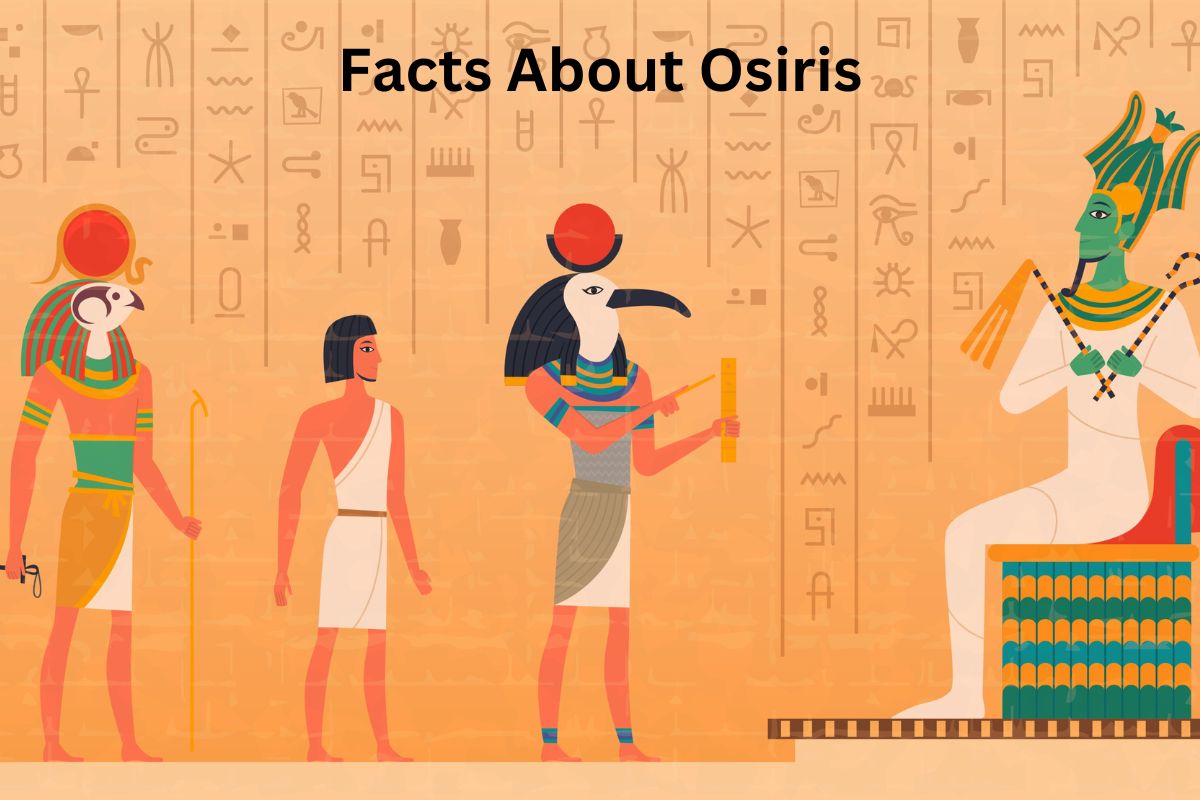Welcome to Facts Vibes! Uncover the timeless mythology of Osiris, the revered Egyptian god, in our latest article. Discover intriguing facts about his role as a symbol of life, death, and resurrection that have captivated generations. Join us on an enlightening journey into ancient Egyptian lore.
The Mythical Origins of Osiris: Exploring the Facts
The Mythical Origins of Osiris: Exploring the Facts
The story of Osiris, a prominent figure in ancient Egyptian mythology, has captivated scholars and enthusiasts for centuries. According to the myth, Osiris was a benevolent king who ruled Egypt with wisdom and justice, until his brother Set, driven by jealousy and ambition, murdered him.
The most important aspect of Osiris’ story is his resurrection. After his death, Osiris was resurrected and became the god of the afterlife and the underworld. This concept of resurrection and eternal life played a significant role in ancient Egyptian religious beliefs, offering hope and solace to the people.
Additionally, Osiris’ role as a symbol of fertility and regeneration further emphasized his importance in Egyptian mythology. The annual flooding of the Nile River, vital for agricultural prosperity, was believed to be linked to Osiris’ legendary death and resurrection, making him a central figure in the agricultural cycle of ancient Egypt.
The enduring legacy of Osiris in Egyptian culture is evident in the elaborate funerary practices and rituals dedicated to him, emphasizing the profound impact of his myth on ancient Egyptian society.
In conclusion, the mythical origins of Osiris continue to intrigue and inspire exploration, shedding light on the beliefs and values of one of the world’s most fascinating ancient civilizations.
Most popular facts
Osiris is a prominent god in ancient Egyptian mythology and is often depicted as the god of the afterlife, the underworld, and the dead.
Osiris is a prominent god in ancient Egyptian mythology and is often depicted as the god of the afterlife, the underworld, and the dead.
He is considered the son of the earth god Geb and the sky goddess Nut, and he is also the brother and husband of Isis, another important deity in Egyptian mythology.
He is Osiris, an important deity in Egyptian mythology.
Osiris is often represented as a mummified king, symbolizing death and resurrection.
Osiris is often represented as a mummified king, symbolizing death and resurrection.
According to mythology, Osiris was murdered by his brother Set, who was jealous of his power, and was then resurrected by his wife Isis.
According to mythology, Osiris was murdered by his brother Set, who was jealous of his power, and was then resurrected by his wife Isis.
He became the ruler of the underworld and the judge of the dead, responsible for determining the fate of souls in the afterlife.
Hades became the ruler of the underworld and the judge of the dead, responsible for determining the fate of souls in the afterlife.
Osiris is often associated with the flooding of the Nile River, which was seen as a symbol of his life-giving and rejuvenating powers.
Osiris is often associated with the flooding of the Nile River, which was seen as a symbol of his life-giving and rejuvenating powers.
As a fertility god, Osiris was also connected to the cycle of agricultural growth and harvest in ancient Egypt.
Yes, Osiris was indeed connected to the cycle of agricultural growth and harvest in ancient Egypt as a fertility god.
The worship of Osiris played a central role in the religious beliefs and funerary practices of ancient Egyptians, emphasizing the hope for an afterlife.
The worship of Osiris played a central role in the religious beliefs and funerary practices of ancient Egyptians, emphasizing the hope for an afterlife.
In art and iconography, Osiris is typically depicted as a mummified figure wearing the Atef crown with ostrich feathers.
In art and iconography, Osiris is typically depicted as a mummified figure wearing the Atef crown with ostrich feathers.
He is often shown holding the crook and flail, symbols of kingship and authority, reflecting his role as a divine ruler.
He is often shown holding the crook and flail, symbols of kingship and authority, reflecting his role as a divine ruler.
The myth of Osiris’s death and resurrection served as a template for the Egyptian concept of the afterlife and the idea of rebirth and renewal.
The myth of Osiris’s death and resurrection served as a template for the Egyptian concept of the afterlife and the idea of rebirth and renewal.
Festivals and rituals dedicated to Osiris were an integral part of Egyptian religious observances, particularly the annual celebration of his resurrection.
Osiris festivals and rituals were central to Egyptian religious observances, especially the annual celebration of his resurrection.
Temples and cult centers dedicated to Osiris were established throughout ancient Egypt, with Abydos being one of the most significant sites of his worship.
Sure! Temples and cult centers dedicated to Osiris were established throughout ancient Egypt, with Abydos being one of the most significant sites of his worship.
The Osirian beliefs and rituals persisted for thousands of years, remaining influential even during the Greek and Roman periods of Egyptian history.
The Osirian beliefs and rituals persisted for thousands of years, remaining influential even during the Greek and Roman periods of Egyptian history.
The cult of Osiris had a profound impact on the religious and spiritual worldview of ancient Egyptians, shaping their understanding of death, resurrection, and the eternal cycle of life.
The cult of Osiris had a profound impact on the religious and spiritual worldview of ancient Egyptians, shaping their understanding of death, resurrection, and the eternal cycle of life.
In conclusion, the mythical tales of Osiris reveal a rich blend of themes such as life, death, rebirth, and divine kingship in ancient Egypt. The symbolism associated with this enigmatic deity continues to fascinate and resonate with modern audiences, underscoring the enduring legacy of the timeless mythos of Osiris.
